Kamakura, only a short train ride from Tokyo making a great day trip. In our opinion it’s a must-see when visiting Japan. Whether you are traveling around the country or on a work trip and staying mostly in the city, Kamakura affords you a chance to get a breath of fresh air.
From watching the surfers at Kamakura beach to enjoying the peaceful temples and shopping for all things kawaii (cute) or traditional, this little city really has it all. In one day trip to Kamakura, you will be refreshed and either ready to go right back to work or head off to explore more of this gorgeous country.

Getting to Kamakura from Tokyo and Other Major Cities
From Tokyo – From Tokyo Station, Take the JR Yokosuka (blue)line. It’s a straight shot, takes about 45 minutes and you are listening for Stop number 8. Note: Stop number 7 is North Kamakura or Kita-Kamakura, so you want the second Kamakura stop.
From Yokohama – This is on the same route, JR Yokosuka Line, and only takes 26 minutes.
From other Northern Cities – You will need to take a shinkansen or regular train to Tokyo or Yokohama or Shinagawa, then take the follow-on Yokosuka line to Kamakura.
From Kyoto and Points South – You will take the Tokaido-Sanyo Shinkansen to Shinagawa then take the JR Yokosuka Line the rest of the way to Kamakura.
When is the Best Time to Go to Kamakura?
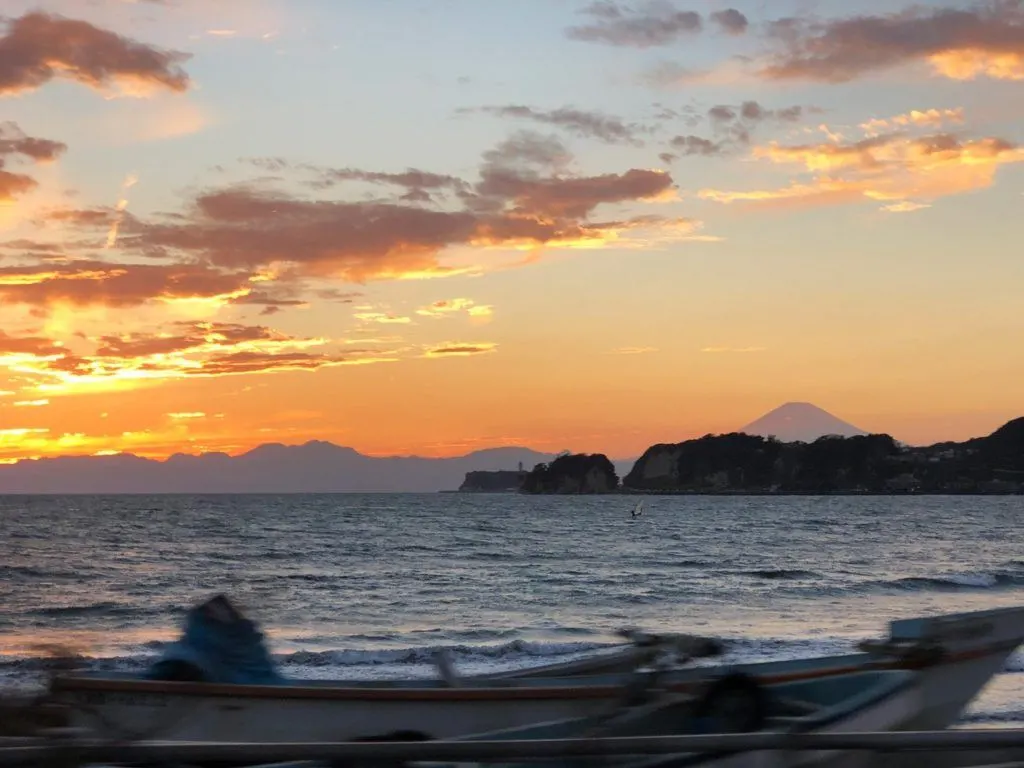
Pin Kamakura Day Trip to help you make plans.
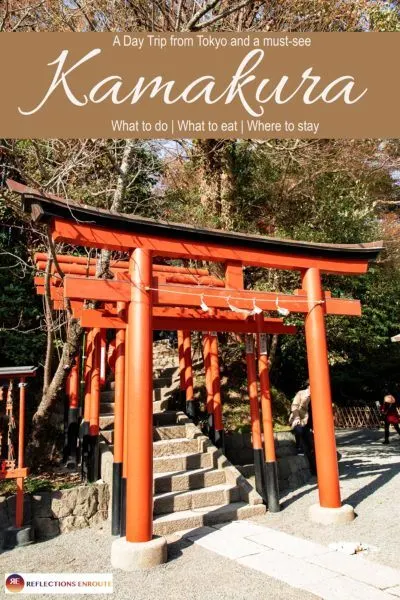
Living in Kamakura, I can tell you that overall the weather is rather mild. In my mind, there are really two seasons– the muggy season and the rest of the year. Temperatures range from about 30 degrees Fahrenheit to 90 degrees Fahrenheit throughout the year, but for the most part, it is comfortable for walking and hiking, except maybe during the hottest part of summer. The majority of the year is well within 50 -70 degrees.
If you enjoy unique things you can only do in Japan, check out this podcast!
It does rain in Kamakura, and many of the shops downtown always have a good selection of umbrellas because of this. The heaviest rainfall is in the spring and fall, as would be expected. For the most part, it doesn’t rain for long, and there is usually plenty of sunshine dappled in between rain storms to keep you dry and smiling.
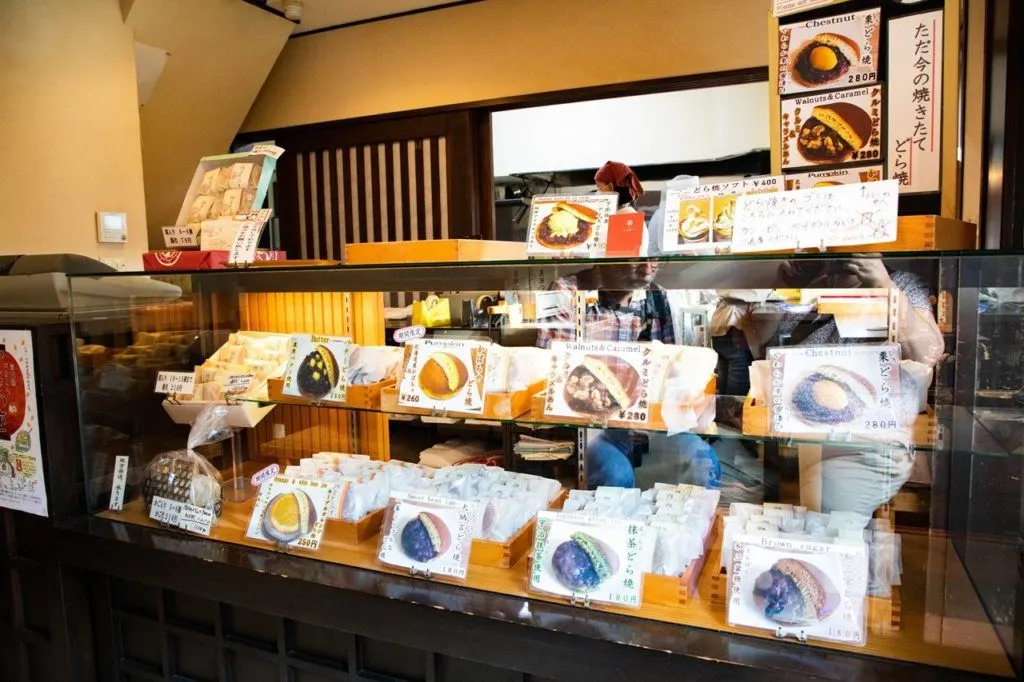
Quite frankly, I would rather have more rain if it would eliminate the humidity in the air during the peak tourist season in the city. From about mid-June until well into September, some days are just unbearably humid.
It’s the kind of humidity that makes you want to jump in the ocean and stay there all day long, which plenty of people do, or at the very least you want to take multiple showers per day. It also makes you want to stay inside where the air conditioning is a gift and a respite. Just walking out the door and getting in a car is enough to get you schvitzing in an unflattering and messy manner. It’s just plain yuck, and I do not like it.
People have told me it snows in Kamakura, and I’ve even seen photos, but I’ve yet to experience it, so quite frankly until it happens I just don’t believe it.
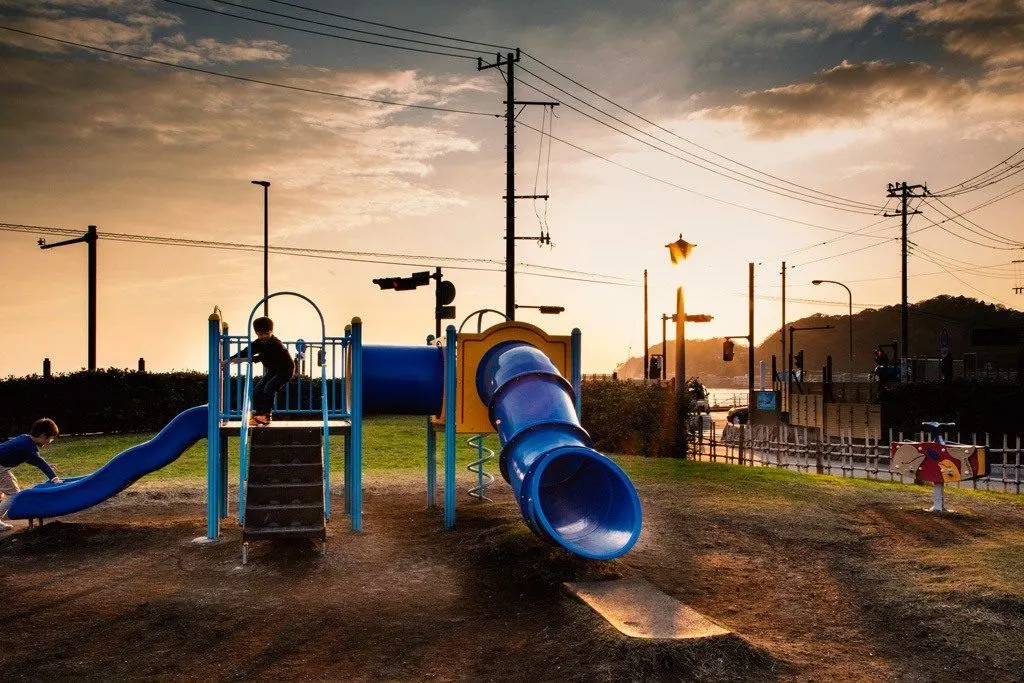
In Summer
Summers in Kamakura are all about the beach, because summer is hot and muggy, and for me it can be downright miserable. Swimming, surfing, playing in the water makes it fun, but trying to walk or hike to the various temples will just make you cranky.
If you are traveling with a family, and you are coming in summer don’t forget to pack your swimsuits and make sure your itinerary is beach-heavy, with maybe a taxi ride to the two or three other things you’ll want to see while you are here so you can luxuriate in its air conditioning for those precious few minutes it will take you to get there.
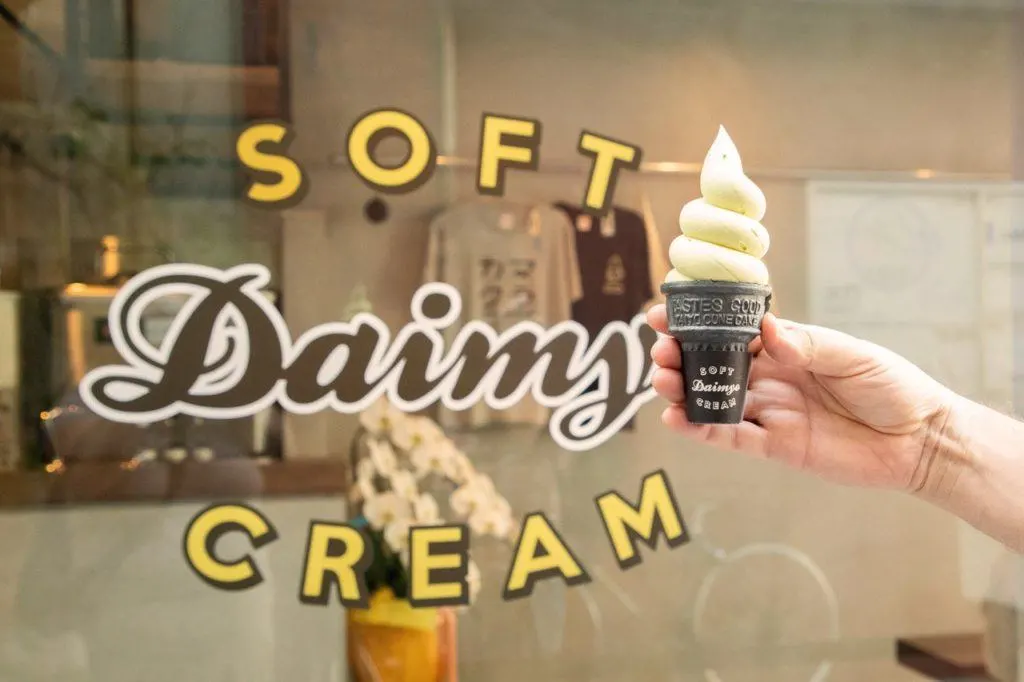
In Winter
Now, this is what I’m talking about. Winters here are mild. Yes, you get that occasional cold day, but most of the time a jacket will keep you very comfortable, and you can walk, walk, walk. People are everywhere, including the beach. The only problem with winter is that when the heat is turned on inside the trains and hotels, it can get a bit much. I just open the window.
There are plenty of winter festivals and activities, especially around New Year’s. The locals will go to the shrines in droves. This past New Year’s at Tsurugaoka Hachimangu there were 6,000 people.
It’s festive and the weather makes it so you can be outside for hours and not get cold. Some other events in winter include: the Setsuban Festival in Feburary and the Samurai Festival including Kusajishi Archery in December.
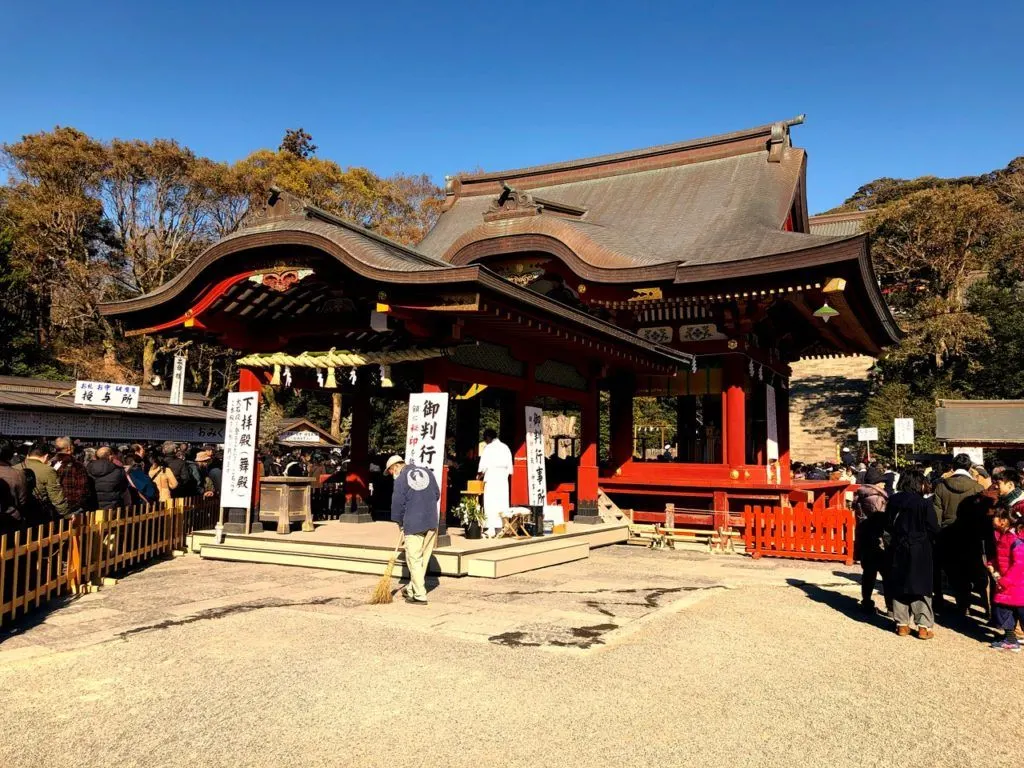
Other Times of Year – Events
April – Kamakura festival is the biggest event of the year. It includes special dances, archery, and of course some amazing street foods.
July – Fireworks Festival is on the beach. It’s quite the show.
August – Lantern Festival at the Tsurugaoka Hachimangu Shrine.
Getting Around Kamakura
As I’ve mentioned, the absolute best way to get around this small city is to walk. The town center is compact, and it’s only a 12-minute walk or so all the way to the beach. You can, however, rent bikes right at the train station, or ride the bus or train as well. There are plenty of short hikes around the area to take you to see the temples and other places of interest.
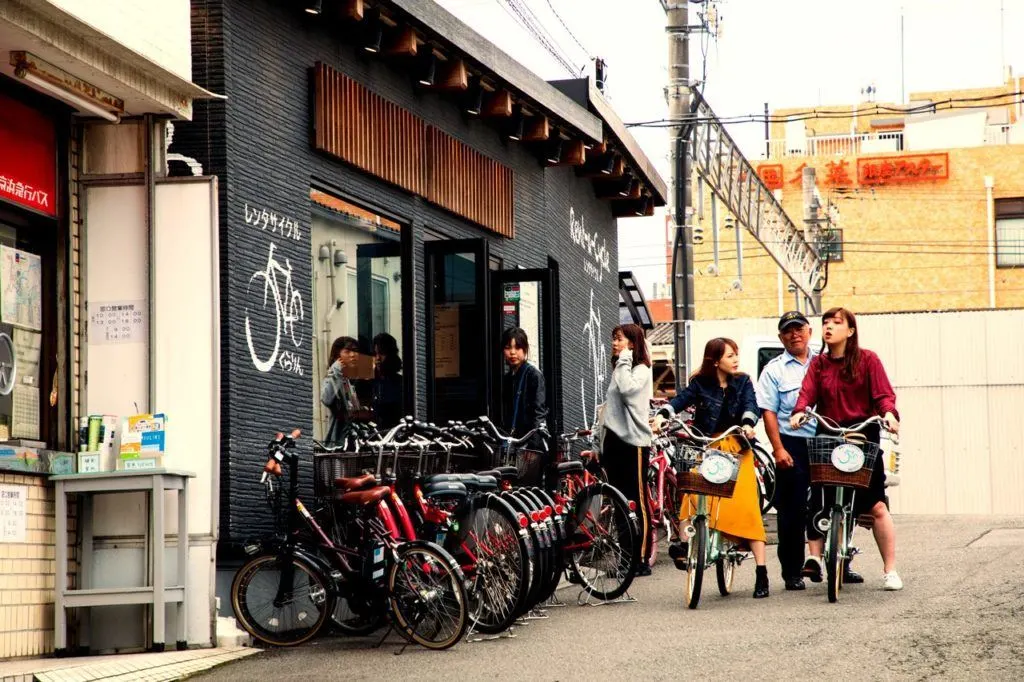
Bikes
Bicycle touring and riding bikes just for fun is becoming more and more popular in Japan. It’s easy to find rentals in just about any town. As you exit the Kamakura train station, you can also rent a bike (electric or manual).
Except on the main roads, there really isn’t that much traffic to worry about, and there is bike parking at every temple for free. It does cost to park your bike near the city center, though, so it’s better to only rent the bike to do the outlying temples, and then turn it in before you walk around and eat lunch or dinner, unless you don’t mind paying to park.
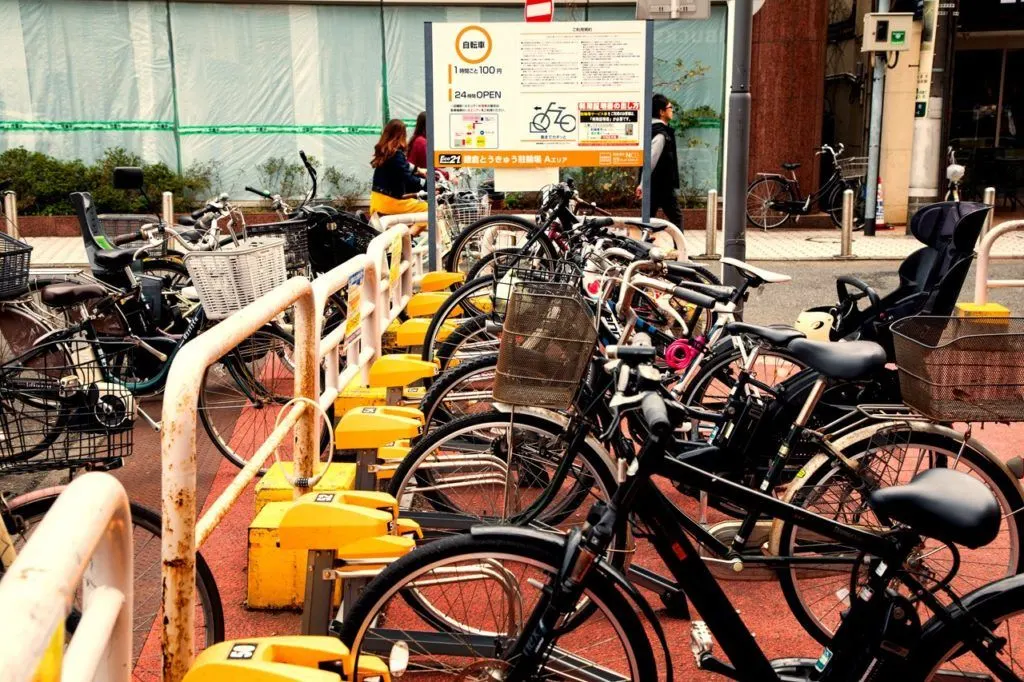
Buses
Buses are very inexpensive, but the cost depends on what your destination is. The best way to pay is with your Suica or Passmo card, but if you don’t have one, just tell the bus driver where you are going and he’ll tell you the cost. We use our Passmo, and we’ve never paid more than 200 yen around town.
Train
You can take the electric train called the Enoden line. It will take you toward Hase Dera and Kotokuin, as well as Enoshima. It’s a bit of an attraction all on its own. People line up all along the tracks to take its photo or a selfie with the train. Seriously, look up #enoden and #enodenlove and you’ll see what I mean. If and when you ride the Enoden, you will see lots of people waiting to take a shot when the train curves or is pictured with the water.
Unfortunately, you have to buy special tickets for Enoden, but there are special machines located at the train station. However, you can still use your Passmo or Suica cards as well.
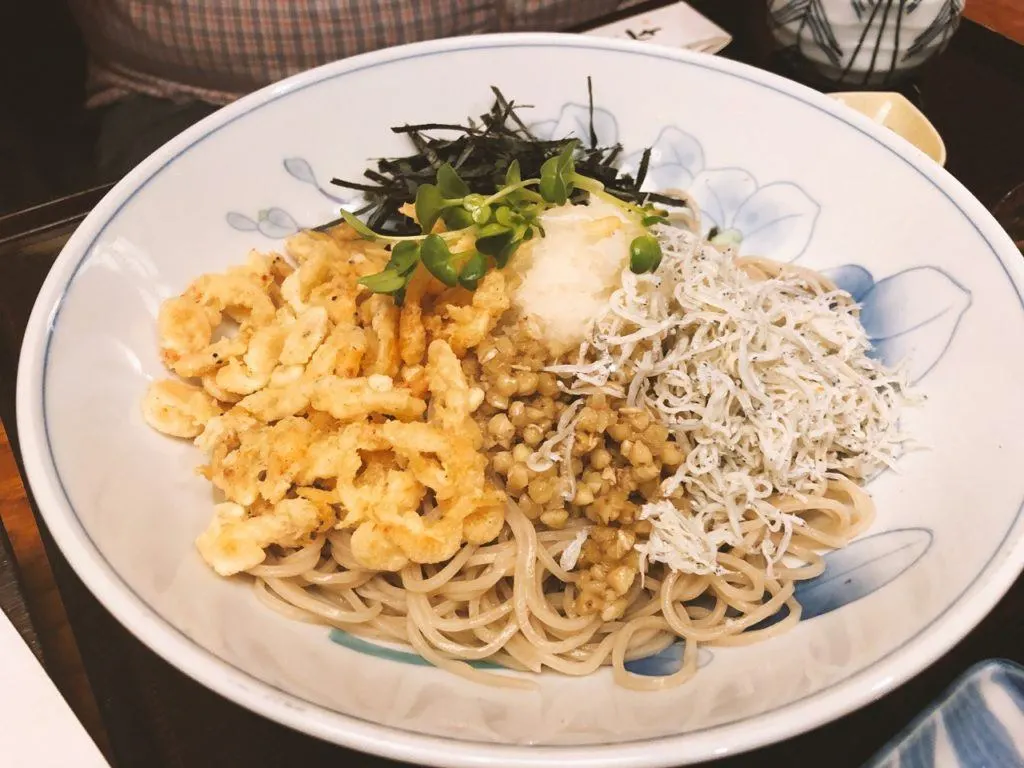
Kamakura Free Kankyo Tegata
If you think you will use public transportation throughout your stay, you may be interested in visiting the Visitor Information Center at the train station and buying this transportation pass with allows you to get unlimited travel in the immediate vicinity. It costs 550 Yen for adults and 280 Yen for children.
Additional Japan Reading:
Snow Monkeys in Hot Tubs
Visiting the Otagi Nenbutsu Temple in Kyoto
Animal Cafes in Japan
Things to Do on a Day Trip to Kamakura
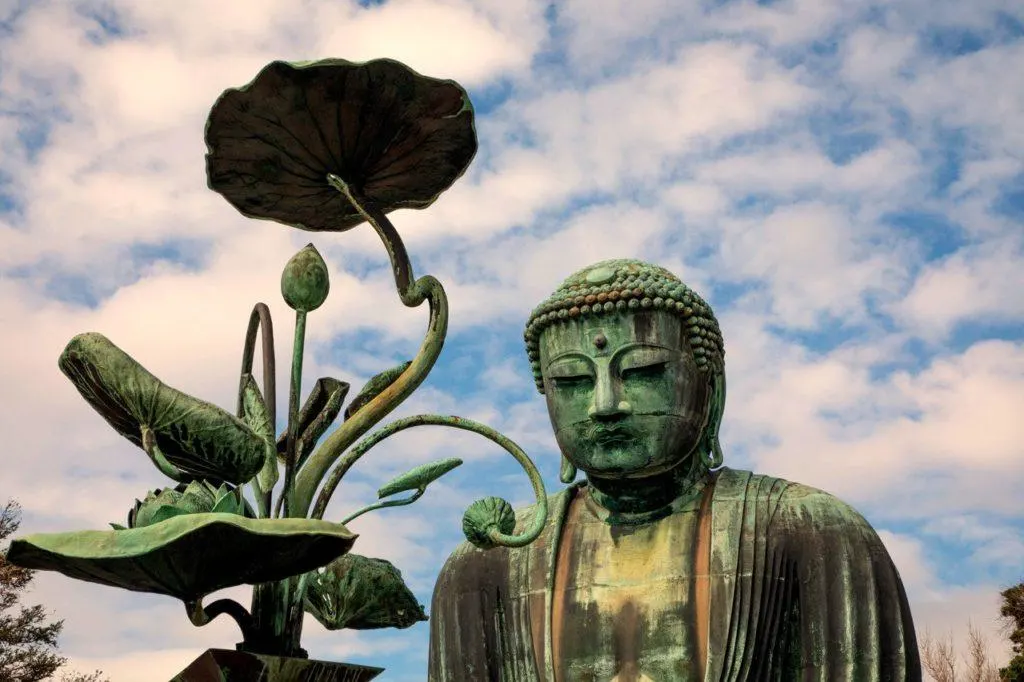
The Big Buddha at Kotokuin Temple
For a few hundred yen, one of the most popular sights is the Daibutsu, or Grand Buddha. He is located at the Kotokuin Temple. While there you can even enter inside the statue for another 20 Yen. Inside you will see the seams where the Buddha was put together, and in these seams, worshippers have left coins for good luck. In the vicinity, look for Buddha souvenirs, like chocolates and lollipops.
This temple is always busy, so you might want to head there as soon as you arrive, or wait until the end of the day. It only takes about 20 minutes to enjoy the Buddha.
Hours: 8:00 – 5:00 (winter) and 8:00 – 5:30 (summer), open everyday.
Address: 4-2-28 Hase, Kamakura City
To get to the big Buddha: Take the Enoden line to Hase (3 stops from the main station). After disembarking turn to the right and walk about three blocks. You can also take bus numbers 2 or 4, or just ask the bus driver for “Daibutsu.”
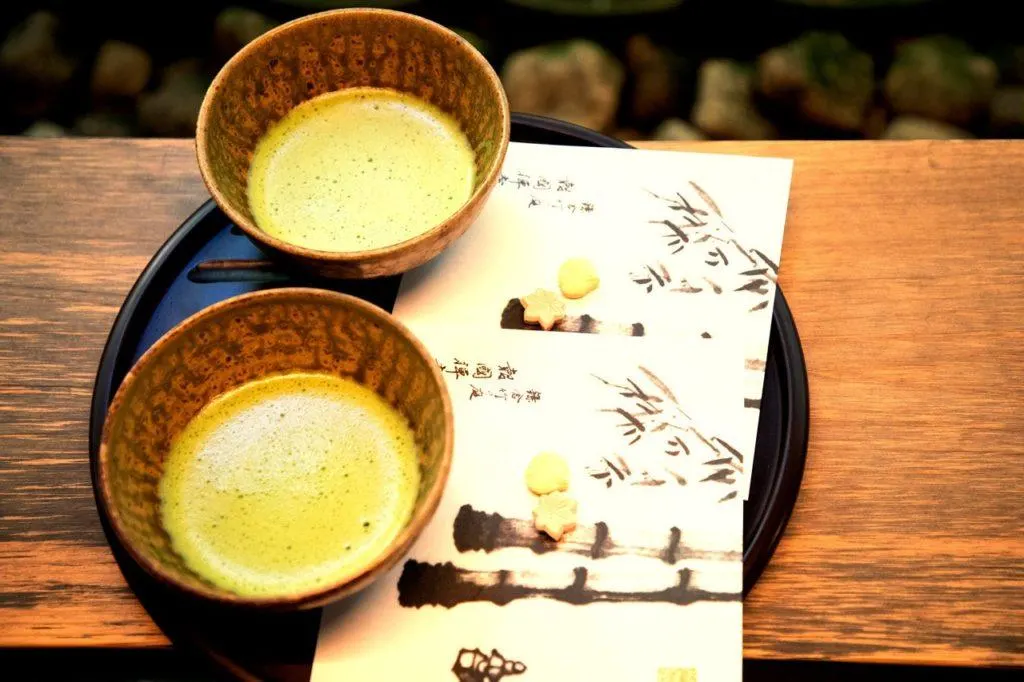
The Bamboo Forest at Hokokuji Temple
The Hokokuji Temple is quiet and a little out of the way, but it has a small stand of bamboo that is very photogenic. The best thing to do here is go to the tea hut and order some traditional matcha tea. There the three ladies sitting in the booth will froth and froth your fresh tea, serve it with two small wagashi (Japanese sweets), and you can sit looking out at the forest while you sip.
This is a very popular stop, especially for locals. The best time to go would be as early as possible in the morning. Try to get there right at 9:00.
Cost: 200 Yen for entrance, but you must buy your tea ticket at the entrance. Anyone who wants to drink tea pays another 700 Yen.
Hours: 9:00 – 4:00 each day, closed Dec. 29 – Jan. 4 each year.
Address: 2-7-4 Jomyoji, Kamakura City
To get there: Go to the No. 5 bus stand and take any bus that stops. Make sure to tell the bus driver you are going to Hokokuji, because the stop is hard to see. The bus stop is on the main road, which you must cross and walk up the hill about half of a block to get to the temple.
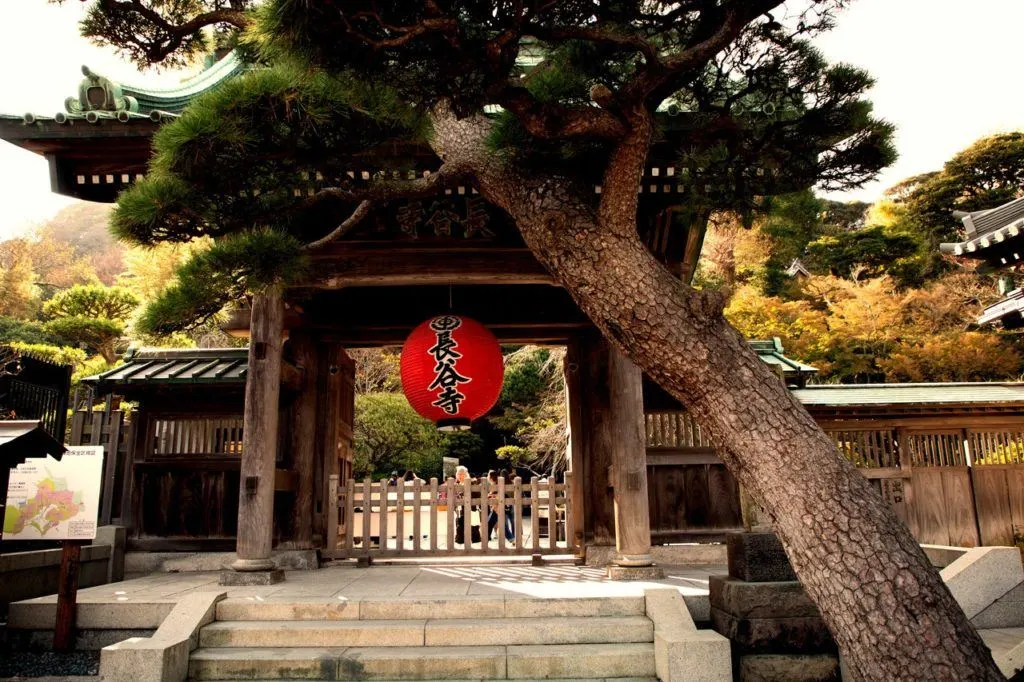
Hasedera Temple
One of the oldest temples, founded before the Samurai era, Hasedera is most famous for its huge wooden eleven-faced Kannon, as well as its views and flowers.
Cost: 300 Yen, plus 200 Yen to visit its famous Treasury.
Hours: Temple is open every day 8:00- 5:00 (summer), 8:00-5:30 (winter), but the Treasure is only open from 9:00- 4:00 and is closed every Tuesday.
Address: 3-11-2 Hase, Kamakura City
To get there: It is very near the Big Buddha, so I would walk there. Head back towards the Enoden station at Hase and you will turn right. It’s at the end of the road. There are signs, and there are plenty of people who are doing the exact same thing, so you can follow them.
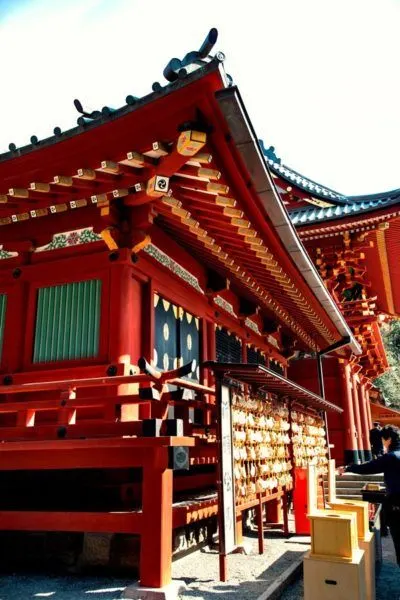
Tsurugaoka Hachimangu Shrine
The largest and most important shrine in Kamakura, it’s right downtown. The area is very park-like with ponds and trees and paths for walking. It is the center of the majority of festivals and events during the year.
Cost: Free for the shrine, but there is also a Treasure house and it costs 200 Yen per person.
Hours: The shrine is always open, and the Treasure house is open everyday from 8:30 – 4:00, closed Sep. 15.
Address: 2-1-31 Yukinoshita, Kamakura City
To get there: After exiting the train station, you walk straight to the main street and turn left. It’s at the end of the road. It’s about a five minute walk.
Zeniaraibenzaiten Ugafukujinja Shrine
Also known as the money-washing shrine, folks come here to wish for good fortune.
Cost: Free (Bring your own money for washing.)
Hours: Always open.
To get there: It’s a bit of a walk, maybe 30 minutes so most people take a taxi.
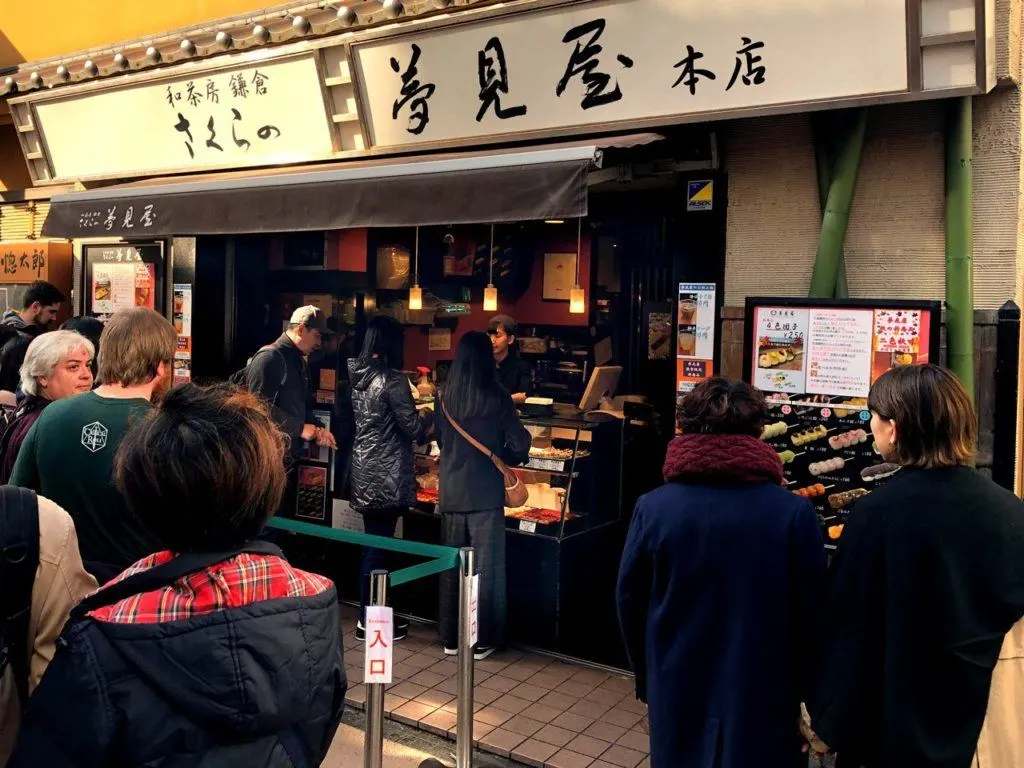
Komachidori or Shopping Street
Komachidori is my favorite place to wander in Kamakura. It feels almost like you are being transported back in time, and you can buy all kinds of souvenirs, traditional handicrafts, and textiles. You can also find all kinds of food, Japanese and foreign foods, street food, and bakeries. It’s usually pretty crowded, but no one is hurrying; it’s laid back and fun.
To get there: Turn left out of the main train station. It’s right there!
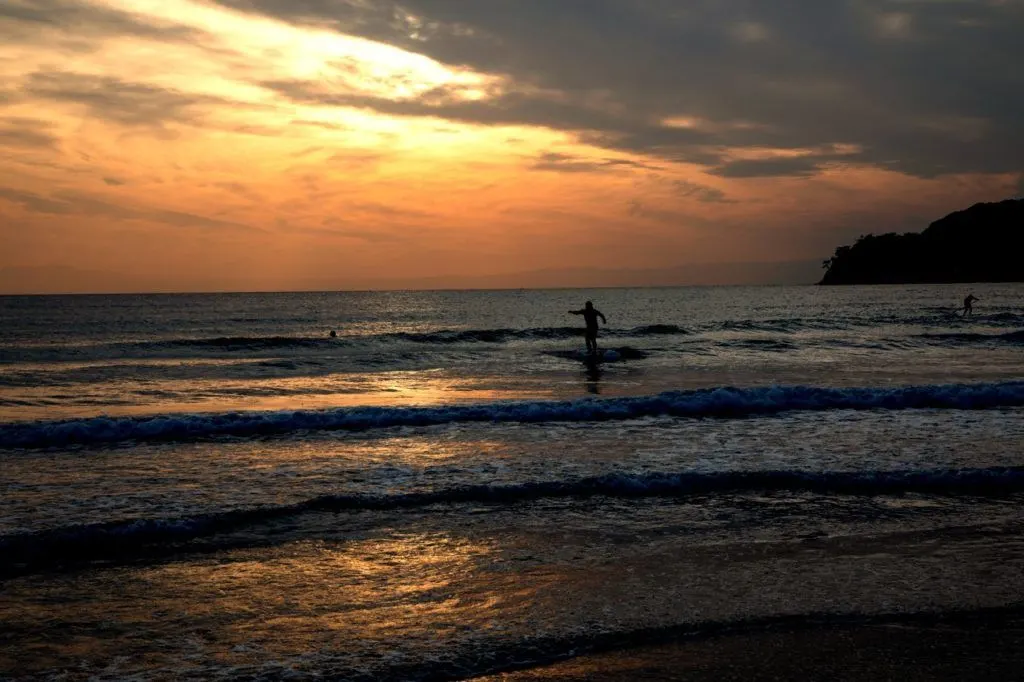
Kamakura Beach – Yuigahama
The sand is wide and there are plenty of shops, restaurants, and beach kiosks to keep you in drinks and food while you are there. No matter the time of year, surfers and fishermen will be on the water.
The surfers wear wet suits and sit on their boards waiting for the perfect wave. Everyone else is sunbathing, building sand castles, walking their dogs, chatting with friends, and having a great time.
The best thing is that you can catch some amazing orange-yellow sunsets from the beach, and you will be double lucky if Mt. Fuji is out as well.
Hiking Trails in Kamakura
There are plenty of walks to do in and around the city. Almost every visitor takes the 15-minute walk to the beach, hoping for a view of Mt. Fuji. The best times for this are between October and April, but other times you can see the mountain if it’s a really clear day. Regardless whether Mt. Fuji is out, almost every day you will get a stunning sunset over Sagami Bay and the Pacific Ocean.
The other recommended walks are all trails to help you visit the famous temples and shrines. If you are interested, the best thing to do is go straight to the Visitor Information Center at the station and get a map.
Note: Enoshima is not on the map, but you take the Enoden line to get there…super simple.
Check out Kamakura’s Official Website for more ideas and travel inspiration.
Map of Kamakura Itineraries
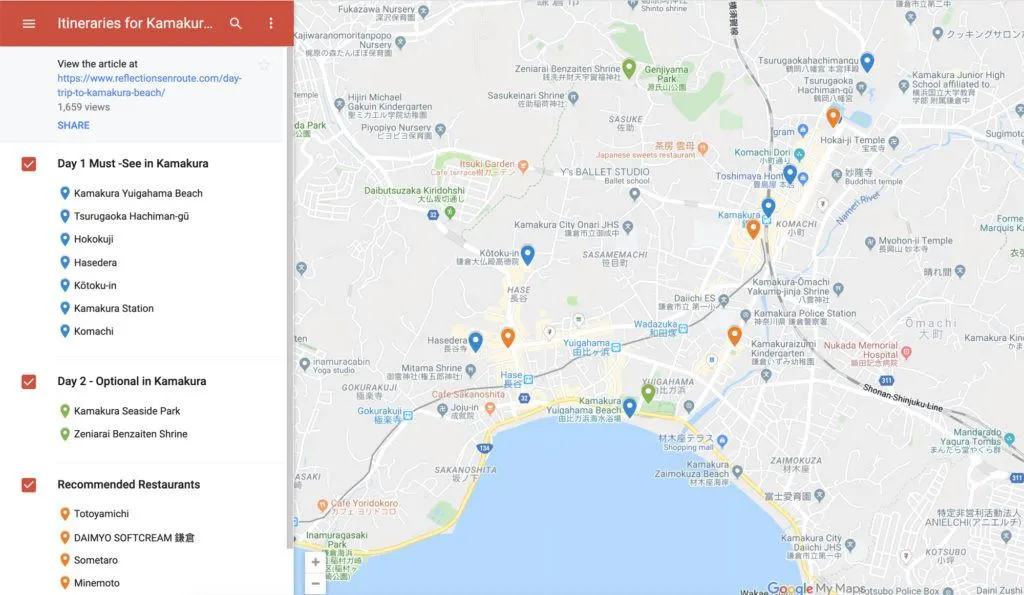
How much time is needed in Kamakura?
You can easily do Kamakura city justice and see most of the sights in one day. However, if you want to visit Enoshima that will take an additional half day and of course, you can spend as much time as you like at the beach, so it’s really up to you. Although, unless you really want to relax, two days is probably the most you would want to spend here.
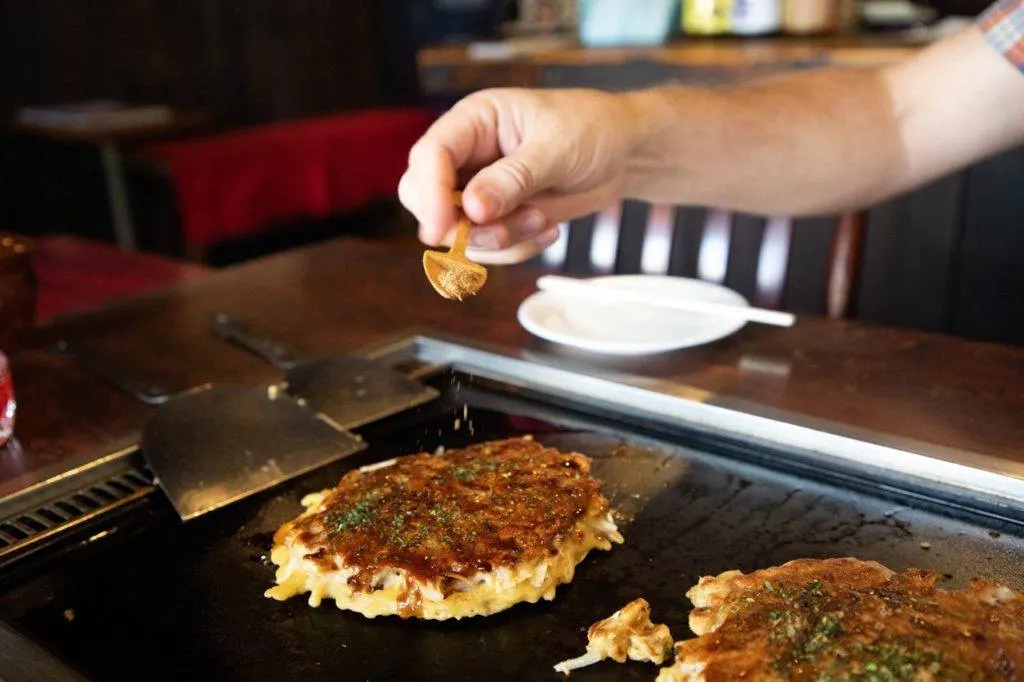
An Itinerary for your Kamakura Day Trip
I would try to get here as early as possible, maybe by 8:30 AM.
Morning
As soon as you tap out of the station, go out the West Exit, turn left and buy your Enoden ticket to Hase. (3 stops)
Visit the Daibutsu at Kotokuin Temple.
Visit Hasedera Temple.
Eat lunch at Sometaro Restaurant, especially if you want to try making your own Okonomiyaki.
Afternoon
Take the bus or the Enoden back to the main train station.
Walk down Komachidori, and at the end of the street turn right.
Continue walking one block to the Tsurugaoka Hachimangu Shrine.
Walk back to the station via the main street which is full of restaurants and shops, and has a beautiful walkway in the middle of the street.
Evening
Make sure to go to Yuigahama Beach for sunset.
Dinner: Eat at a traditional Japanese restaurant like Minemoto.
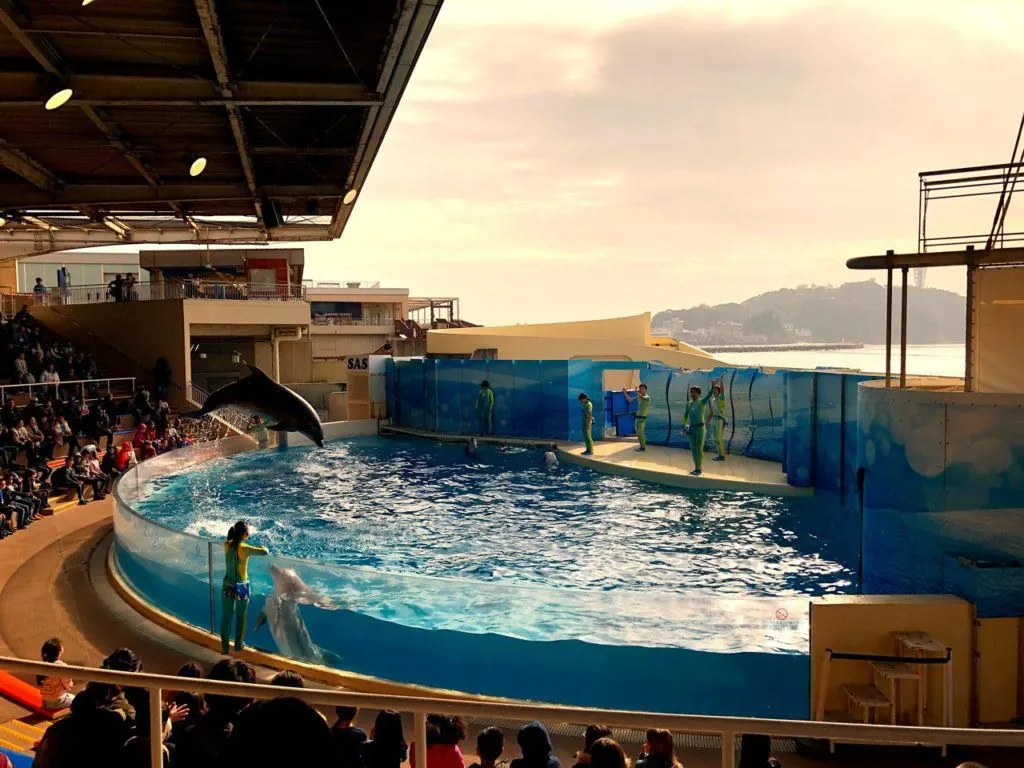
Kamakura Itinerary for 2 Days
If you are planning on spending one night here, you might want to go ahead and spend two nights here, that way you will have two full days to explore before leaving.
Day 1
See above itinerary. If you have extra time, make sure to get to the money washing shrine.
Day 2
A visit to the small seaside town of Enoshima is well worth the time. You can spend anywhere from a couple of hours to a full day enjoying the sights. Some things worth seeing are the island shrines, caves, and lighthouse. Back across the bridge, on the mainland, you can visit the aquarium, and have a good choice of restaurants for lunch.
When you get back to Kamakura, enjoy the beach. This is especially a good option if you have young children. There is a fun but small playground right off the beach, in Seaside Park, for them to expend some energy as well.
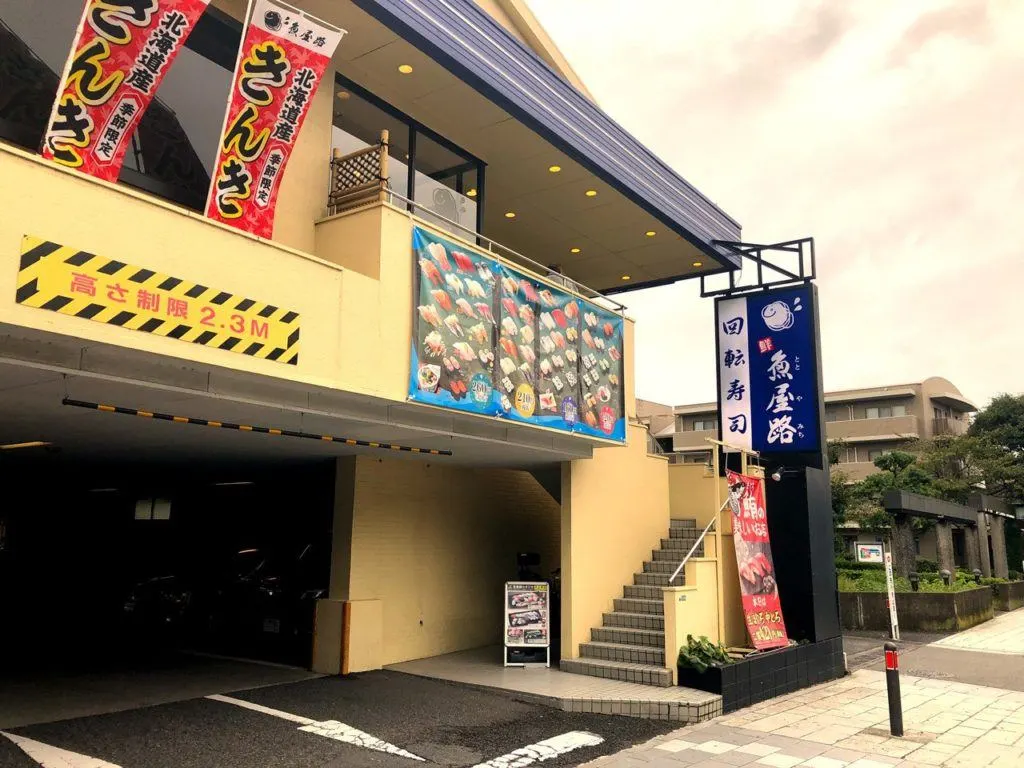
For dinner, walking up from the beach you pass a great Sushi-go-round restaurant, called Totoyamichi. Make sure to check out the hot and extra items you can order as well. We love the cooked scallops and oysters.
Where to Stay in Kamakura
Considering that most people visit Kamakura on a day trip, if you do want to stay for an overnight or two, there are some pretty nice options. Kamakura hotels range from a high-end four-star to guesthouses that are 2-3 stars.
The closest four star hotel, Park Hotel, is located on the beach road, but it is also quite a walk from the downtown area. This is because space is at a premium, so you will find smaller hotels closer to the city center.
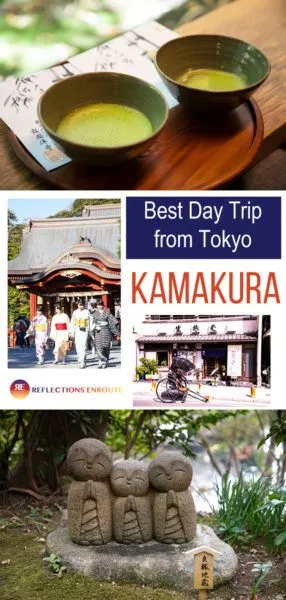

Ginny Vail
Thursday 10th of January 2019
I'm definitely coming to Kamakura next fall, so I have about nine months to memorize this post. As always, you've provided great details and photos.
Corinne Vail
Friday 11th of January 2019
It's an awesome place to visit! We love it.